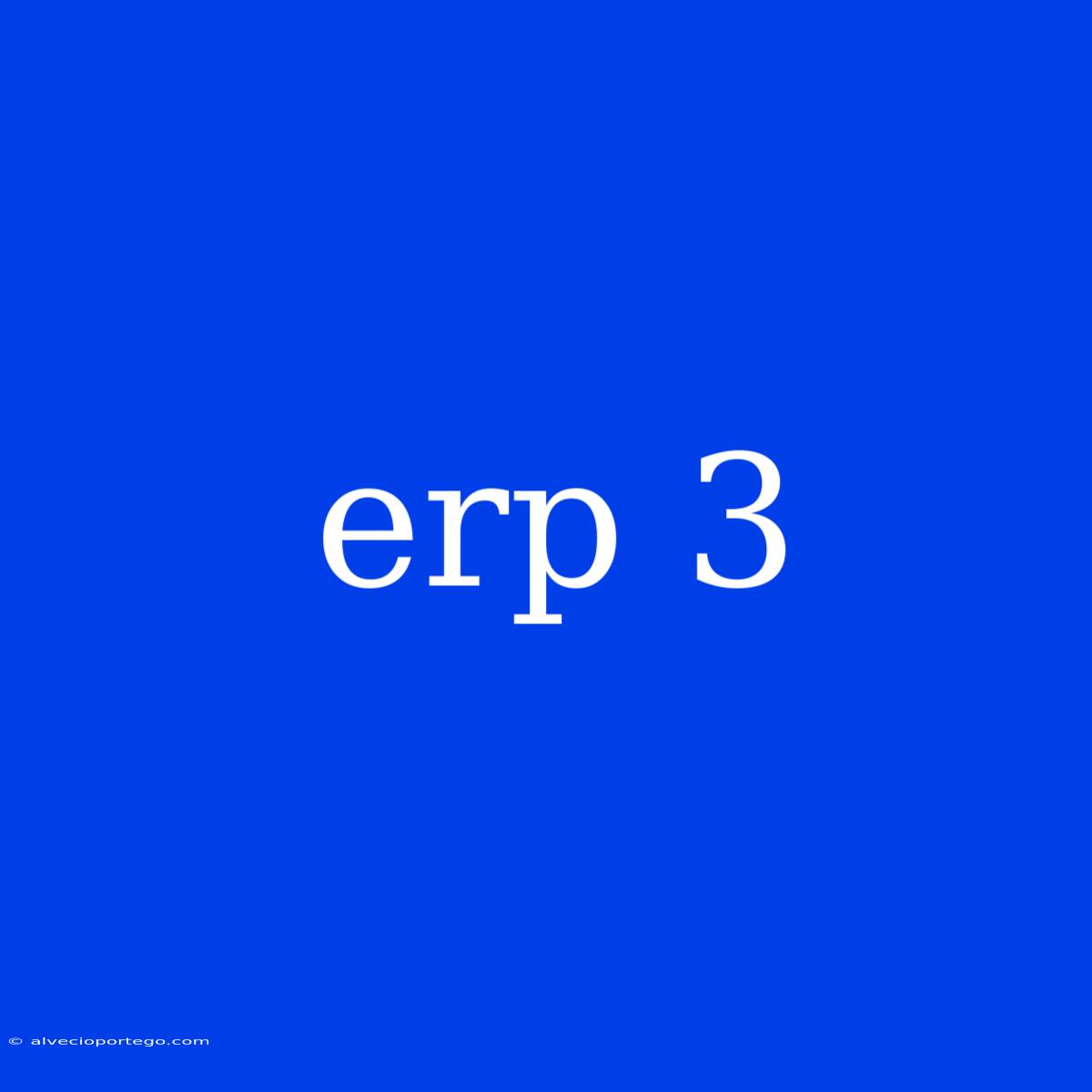ERP 3.0: The Future of Enterprise Resource Planning
Enterprise Resource Planning (ERP) has become a cornerstone for businesses of all sizes, streamlining processes and integrating data across departments. But as technology evolves and the business landscape shifts, ERP systems are evolving too. Enter ERP 3.0, the latest generation, ready to revolutionize the way businesses operate.
What Makes ERP 3.0 Different?
While ERP 2.0 focused on automation and integration, ERP 3.0 goes beyond traditional functionalities, embracing artificial intelligence (AI), cloud computing, big data analytics, and the Internet of Things (IoT). Here's a breakdown of its key features:
1. AI-powered Insights:
- Predictive Analytics: ERP 3.0 uses AI to analyze vast amounts of data, predicting future trends and patterns. This enables businesses to make proactive decisions, optimize resource allocation, and avoid potential risks.
- Automated Decision Making: AI can automate routine tasks, streamline complex processes, and even recommend optimal solutions based on real-time data analysis.
- Personalized Experiences: AI can personalize user experiences, providing customized dashboards, tailored workflows, and relevant information based on individual roles and preferences.
2. The Power of the Cloud:
- Scalability and Flexibility: Cloud-based ERP systems can easily scale up or down to meet changing business needs, eliminating the need for costly hardware upgrades.
- Accessibility and Collaboration: Users can access the system anytime, anywhere, facilitating seamless collaboration across teams and departments.
- Cost Savings: Cloud computing eliminates the need for on-premise infrastructure, significantly reducing IT costs and operational overhead.
3. Big Data and Analytics:
- Data-driven Decisions: ERP 3.0 leverages big data analytics to provide deeper insights into business performance, customer behavior, and market trends.
- Improved Efficiency: Data analytics can identify bottlenecks, optimize workflows, and streamline processes for maximum efficiency.
- Enhanced Customer Experience: By understanding customer data, businesses can tailor their offerings, improve customer service, and foster stronger relationships.
4. The Rise of the IoT:
- Real-Time Data Integration: ERP 3.0 integrates data from IoT devices, providing real-time insights into supply chains, production lines, and asset performance.
- Automated Processes: IoT enables automation of tasks such as inventory management, maintenance scheduling, and resource optimization.
- Enhanced Operational Efficiency: By connecting physical assets with the ERP system, businesses gain real-time visibility and control, leading to improved efficiency and reduced downtime.
Benefits of Adopting ERP 3.0:
- Increased agility and responsiveness to market changes.
- Enhanced decision-making through data-driven insights.
- Improved operational efficiency and productivity.
- Improved customer experience through personalization and tailored services.
- Reduced costs and increased profitability.
- Greater competitive advantage through innovation and digital transformation.
Conclusion:
ERP 3.0 represents a significant leap forward in enterprise resource planning. By embracing the latest technologies, businesses can unlock new levels of efficiency, agility, and innovation, ultimately achieving greater success in today's dynamic and competitive business environment.

